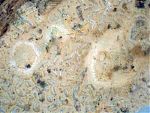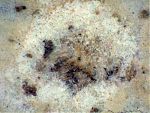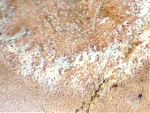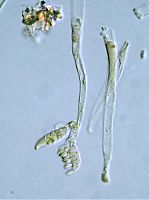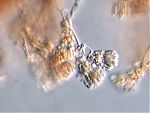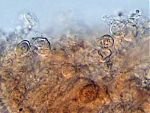Martensella
MARTENSELLA Coemans, 1863 (Bull. Acad. Roy. Belgique, Ser. II, 15:536); 2 spp. (Coemans, 1863; Linder, 1943; Jackson and Dearden, 1948; Benjamin, 1959).
Sporangiophores septate, simple or branched. Sporocladia produced at the apex of the sporangiophore and arises from the side of the fertile region as the tip grows. Sporocladium multicelled, producing pseudophialides from the lower surface. Merosporangia unicelled, long-ovoid to fusiform, one produced from each pseudophialide; released in a droplet of fluid at maturity. Zygospores unknown.
Type species: M. pectinata
Species of Coemansia:
M. pectinata Coemans, 1863 (Bull. Acad. Roy. Belgique, Ser. II, 15:536) (Coemans, 1863).
M. corticii Thaxter ex Linder, 1943 (Farlowia 1:59) (Linder, 1943; Jackson and Dearden 1948; Benjamin 1959).
Martensella spp. are apparently nonhaustorial parasites. Martensella corticii is parasitic on Corticium radiosum (Fr.) Fr. (Jackson and Dearden, 1948), now a synonym of Vesiculomyces citrinus (Pers.) E. Hagstr. Martensella corticii may only be known in North America (Jackson and Deardon, 1948). Martensella spp. have not been grown in culture.
Bibliography
Benjamin, R.K. 1959. The merosporangiferous Mucorales. Aliso 4:321-433.
Coemans, E. 1863. Quelques hyphomycètes nouveaux.—Ire.—I. Mortierella polycephala et II. Martensella pectinata. Bull. l’Acad. Royale Sci., Lett., Beaux-Arts Belgique, Sér. 2, 15: 536-544.
Jackson, H.S., and E.R. Dearden. 1948. Martensella corticii Thaxter and its distribution. Mycologia 40:168-176.
Linder, D.H. 1943. The genera Kickxella, Martensella and Coemansia. Farlowia 1:49-77.
Updated May 16, 2010

